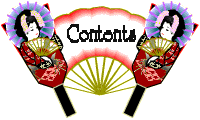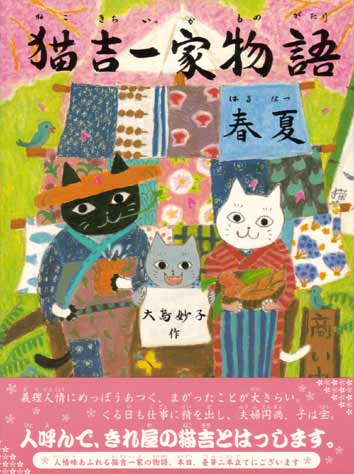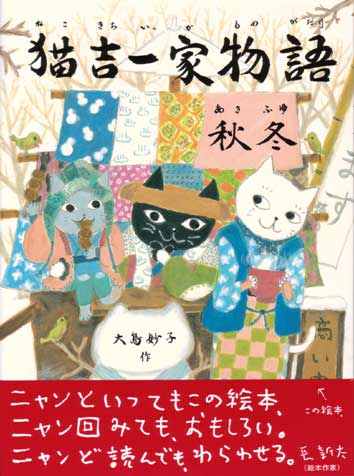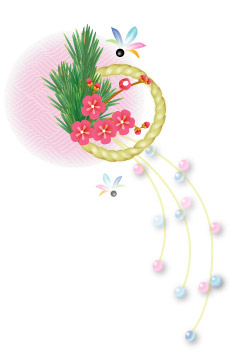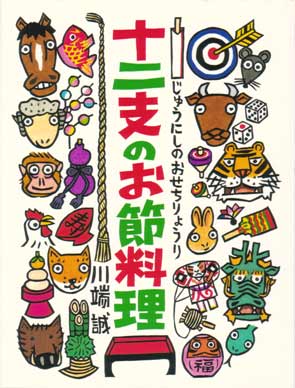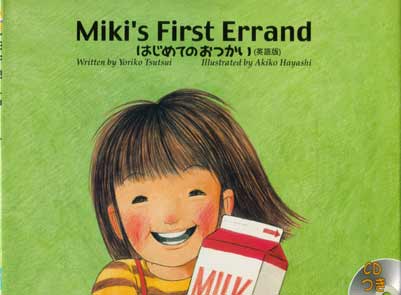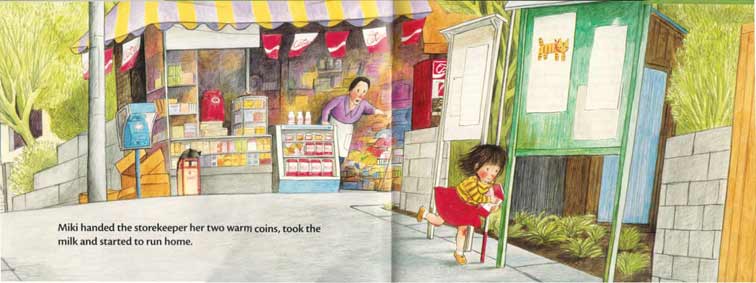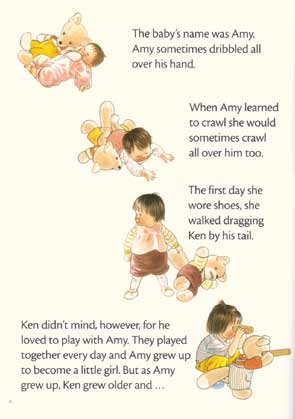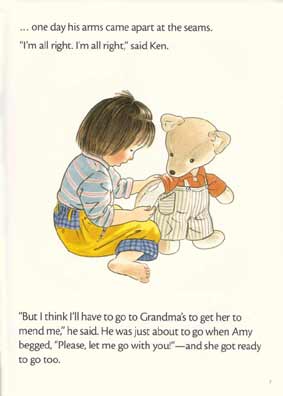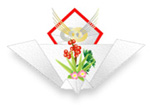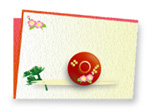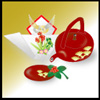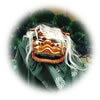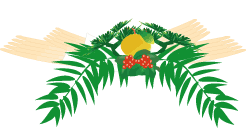|
An Interview with Mitsumasa Anno
We're pleased to present our
interview with Mitsumasa Anno, the eminent
picture book creator whose book we
reviewed in our Autumn, 2003 issue.
【Mitsumasa
Anno】
Anno was born in Tsuwano of
Shimane Prefecture on March 20, 1926. He is
a graduate of the Yamaguchi Teacher Training College. Anno had dreamed
of becoming an artist from his earliest years. Eventually, he
began designing books after retiring from his job teaching at a primary
school. Urged on by Tadashi Matsui of Fukuinkan Shoten, he released his
first
picture book, "Topsy
Turvies" (Fukuinkan Shoten). Since that time, he
has been extremely active in the writing, illustration and designing of
picture books. With a firm grounding in both mathematics and
literature, Anno has published numerous books teeming with originality.
Some of his most famous picture books are "Anno's Magical ABC"
(Douwaya),
"Anno's Twice Told
Tales by the Brothers Grimm and Mr. Fox" (Iwanami
Shoten). His other writings include "E no Aru Jinsei"
(Iwanami Shoten)
and "Negai wa Futsu"
(Bunka Publishing Bureau)

Awarded countless international
honors including the prestigious Hans
Christian Andersen award, Mitsumasa Anno is fondly known around the
world as simply, "Anno". His unique and imaginative teaching-style had
captured the hearts and minds of his students while he was a
teacher in primary school. Anecdotes are still making the rounds of how
well he could tell funny stories, and about the countless episodes in
which his pupils were treated to a glimpse of his rich and warm
personality. Even within the short time we were privileged to spend
with him, we learned many things about his work with picture books.
|
|
You're one of the few Japanese
authors who is truly active on an international level. Is it true that
the judges who honored you with the 1974 Kate Greenaway Award for
"Anno's Alphabet", didn't know
that you were a native of Japan?
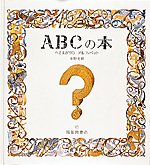 Yes
it is. "ANNO" seems to be a surname that's used in other countries. My
understanding is that at that time, a book had to initially
be published in the U.K. prior to any other country for it to be
eligible
for the Kate Greenaway Medal. However, my editor (*1) was adamant about
the worthiness of this book and as an exception, it became a Commended
book and I received a prize certificate which is now on display at
the Mitsumasa Anno Museum.
(c) Mitsumasa Anno
|
|
"Anno's
Alphabet" is very
highly regarded and has received many awards from around the world, has
it not? Was it your original intention when you created this book that
it would be published abroad?
 Well,
just because it's an alphabet book doesn't mean I'd originally
planned for international publication. But I do think that I wanted it
to be something that even people outside Japan would enjoy. For
example, if I'd used "Amedama", the romanized Japanese for "candy drop"
as my word for "A", that wouldn't have been possible. I asked the
teachers at the American school in Chofu city, Tokyo as well as various
American and British editors for advice in selecting appropriate words
for each letter. As an example, there was the time I wanted to choose
an original word for "H" and decided to use "Hag". So I drew a picture
of an old witch. My advisors said to me, "Hag" is generally used to
convey the image of an ugly old woman and it's relatively uncommon to
use it in reference to a witch. Even if you wanted to use this drawing
for "Witch", you'd have to remember that witches are not necessarily
old and ugly. Witches can be quite young and beautiful". So as you can
see, there was often a difference between my image of the word I'd
chosen and that of native speakers of English. I wound up having to
find an alternative word to use for many of the letters. I could
probably write a whole book on all the difficulties I came across in
just trying to complete this one picture book.
But thanks to all the trouble
we took in getting this book just right,
there was someone who recognized the worth of my book and said, "ABCs
have been in use throughout the ages since Roman times, but never have
they been expressed before in three-dimensional form". This review
made me happier than any other words of praise I received for this
book. In other words, the reader appreciated the fact that I had
succeeded in drawing the alphabet using trompe l'oeil or illusionism.
Having someone say "in a form never expressed
before" was an acknowledgement of my originality, so being praised in
this way moved me deeply.
|
|
"Anno's
Alphabet" wasn't
your first foreign publication, was it? I believe "Topsy Turvies"
was your first. How did this book come to be published abroad?
"Topsy Turvies" was first
published in Japan in 1968. Since it made the publisher's listings(*2),
it happened to catch the eye of editors in the U.S. and France. As a
result, it was released in those two countries in 1970. Although this
book had originally been published in Japan, it was only after the huge
foreign response that it became popular here as well. After my success
abroad, I began receiving regular inquiries on what I planned to write
next. I believe that having been published in the U.S. made the
greatest impact in that respect.
|
|
You've visited many countries
in your work, but have you ever felt uncomfortable when coming into
contact with foreign cultures?
Until I made my first trip
abroad, I'd been certain that there would be
huge differences in culture. But when I actually visited these
countries, I felt there was considerably more that we had in common
with these cultures than any differences. In the end, I even came to
feel that there were in fact no considerable differences at all. No
matter where in the world one is, there are some basic patterns we
follow. For example, most houses have a window from which it's possible
to see outside, and roofs are generally pointed so that the rain will
run off. Even with food, despite all the differences in taste that
there may be, no one anywhere will be feasting on something that we
couldn't possibly digest. From this perspective, although there are
differences in language and skin color, these differences in culture
aren't nearly as wide as one might believe.
But for my Journey books,
because I'm trying to depict the particulars
of life in each place, even the smallest details have to be absolutely
correct. Which reminds me, a certain Frenchman who had read my book
approached me and said, "I'm amazed that you're so familiar with France
even though you've never lived there. But there is one thing that you
haven't got quite right. You see, the people in France would never wash
their clothes in the river". I couldn't think of what to say. But
later, I remembered this painting
by van Gogh called The
Langlois
Bridge at Arles with Women Washing...(*3).
|
You often go abroad to sketch, but are you
one of those people who likes to plan everything out ahead?
Of course I rarely go on a trip
without checking up on my destination
in advance. But in most cases, once I'm there, I follow my nose. The
same goes for my drawings. If I see a scene I want to draw, I'll just
open my sketchbook, plop down on my bottom and go to it. I do
take
photos but rarely ever make use of them. Right
now, I'm working on the sixth volume of the Journey series. It's based
in Denmark. Hans Christian Andersen's 200th birthday comes up in 2005
so I'm writing this book to coincide with that event. It's due to be a
picture book where the reader travels through Andersen's fairy tales.
|
 Next we'd like to
ask about
your involvement in the project where you collaborated with eight other
outstanding picture book
authors from around the world on the picture book, "All in
a Day". How were these eight other illustrators chosen? And what
made you
decide to create this book in the first place? Next we'd like to
ask about
your involvement in the project where you collaborated with eight other
outstanding picture book
authors from around the world on the picture book, "All in
a Day". How were these eight other illustrators chosen? And what
made you
decide to create this book in the first place?
(c) Mitsumasa Anno
This picture book came about
serendipitously while I was chatting with
Mr. Tanaka, who is with Dowaya, one of my publishers. It was decided on
right then and there. As for the eight illustrators involved, my
British and American publishers introduced some of them to me and some
of them were acquaintances. The inspiration for this book arose when I
was overwhelmed by the finest sunset on earth at Uskudar in Istanbul.
It
was such a fantastic and utterly gorgeous sunset to beat all sunsets.
But when I realized that the sun which was just setting in front on my
eyes was at the very same time, a rising sun in some other country, I
was totally thunderstruck. This meant that this same sun was going down
in a country at war and at that same time, it was rising in a country
at peace. This was an unbelievably shocking realization for me.
|
You illustrated two books, "The
Animals" and "The Magic Pocket",
in which Her Imperial Majesty Empress
Michiko, translated the poems of Michio Mado into English. We've heard
that Mr. Mado and your wife are cousins...
Their being cousins was simply
a coincidence, but since we're both in
the same field, we'd always hoped we would have a chance to work
together sometime. If you think about it, it's a strange
coincidence. It's very difficult to draw illustrations for poems. For
example, the elephant poem goes, "Little elephant, little elephant what
a long nose you have". You can't just draw a picture of an elephant
with a long nose for a poem like that. I think descriptive
illustrations for a poem would really show a lack of taste.
|
|
Are you particularly conscious of your
audience, in other words children, when you're creating a picture book?
I don't really make a
distinction between the books I write for
children and those for adults. I don't draw to please children, I draw
to please myself. Taking off on a tangent here, for me, drawing is my
work. I was once asked at a symposium, "Why do you draw?" I knew what
they would have liked for an answer, "I draw for the children of Japan
who represent our future, blah, blah, blah". But what I actually wound
up saying was, "I draw because that's my work. I made it my work
because it's what I like to do". Michael Ende then said, "The same goes
for me. I'm just like Anno-san", while Tasha Tudor said, "I do my
work so that I can buy
lots of flower bulbs".
|
|
There are still many wonderful
picture books and children's stories in Japan which have never been
made available abroad. Do you have any advice for Japanese writers and
publishers who hope to see their work published overseas?
I think we're extremely
fortunate here in terms of access to foreign books. Thanks to our
publishers, literature from all around the world gets translated into
Japanese. The drawback is, because of the rapid movement
towards westernization after the Meiji era, we've developed an
inferiority complex about our own culture. Consequently, we have a
tendency to believe foreign books are better than ours. But in
reality, Japanese literature is just as good, if not better than that
of any other country. In fact, I believe there's some wonderful
literature in Japan that would easily top any world standard. As
long
as it's decently translated, there's no reason why Japanese literature
should be considered inferior to any. I really hope to see more
Japanese books
translated into foreign languages.
|
|
We know that you've published
many books in addition to your picture books. Would you be kind enough
to tell us about some of your recent releases?
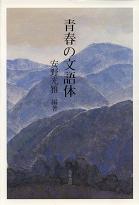 In
December 2003, my book, " Seishun no
Bungotai" [Bungotai(Japanese
literary style) for the Young] was published. Literary works written in
the literary style of the Meiji and Taisho eras have a keenness and
high-mindedness which should appeal to people today. I wrote
this book with the hope that it would remind everyone that we shouldn't
forget the bungotai writing style. In my book, I've recommended
Ohgai Mori's translation of " Sokkyo
Shijin" [An Improvised Poet] by Hans Christian Andersen, Ichiyou
Higuchi's Takekurabe
[Marking our
(c) Mitsumasa Anno Heights], Touson Shimazaki's " Hatsukoi" [First
Love]. I hope you'll take this opportunity to read some books written
in bungotai. |
This isn't directly related to
your work with picture books, but we've heard that just around the time
you first started out as an artist, there was a project which gave you
some grief. Would you tell us a little about your experience and how it
affected your work thereafter?
This was a project involving a book design where I had to think up
several different patterns or ideas. I somehow came up with fifteen
different versions but then, the editor said, "I'd like one more
version". You wouldn't believe how much trouble I had trying to think
up this 16th idea. From the editor's standpoint, I suppose it was just
"one more", but remember, this was after I'd already wracked my brains
for fifteen, so you can imagine how difficult it was. A mathematician
can tell you how challenging it is to come up with just two different
solutions for one math problem. Just when I was really at the end of my
wits from not being able to think up anything, I looked up. Around me I
saw the faces of the people in the train I was on, and suddenly I
realized something. You see, people's faces are made up of some very
basic components, two eyes, a nose and a mouth. But in spite of that,
everyone has a different face. There are millions of different
variations of the human face, as many faces as there are people. And I
finally realized there should be an almost infinite number of possible
ideas for a book design. This was a big turning point for me. It may
sound like I'm exaggerating, but I felt as if I'd been provided with a
revelation. But this is something you really have to find out for
yourself. It would be meaningless for someone to come up to you and
simply tell you, "Look at all the people's faces. Since there are an
infinite variety of faces, by the same token, you should be able to
think up as many as
different variations on a theme as you need." A message has to
hit hard - enough to make you wince - for it to really get through.
Since that time though, I've never had any trouble trying to design a
book.
Mr. Anno, thank you so very
much for this wonderful interview.
|
|
We'd also like to express our
thanks to the chief editor at Fukuinkan Shoten, Minoru Tamura, Manager
of the Editorial department at Chikuma Shobo, Tetsuo Matsuda and
Michiko Nakagawa of the first editorial office for their kind help in
making this interview possible.
(May Takahashi)
|
(*1) The famous expert on
Beatrix Potter, Judy Taylor.
(*2) Fukinkan Shoten Publishers regularly distributes listings of its
publications to foreign publishers.
(*3) You can see an image of this famous painting here: http://www.vangoghgallery.com/painting/p_0397.htm
|
A list
of some of Mitsumasa Anno's
most famous books and
distinctions
Fushigi na
E (Mysterious
Pictures), Fukuinkan Shoten, 1968
Jeux de consruction, France,
1970
Topsy Turvies, USA, 1970
Zwergenspuk, Switzerland, 1972
Den Tossede Bog, Denmark, 1974
Topsy Turvies, USA, 1989
(reprinted)
Chyi Miaw Gwo, Taiwan, 1990
1970
Chicago Tribune Honor Award
ABC no Hon
- hesomagari no
arufabetto
(Book of ABCs - a twisted alphabet), Fukuinkan Shoten, 1974
Anno's Alphabet, UK, 1974
Anno's Alphabet, USA, 1975
1974 The
Minister of Education's Art
Encouragement Prize for New Artists
1974 Kate
Greenaway Commended
1975
Brooklyn Museum of Art Award
1975 Boston Globe Horn Book
Award
(Picture Books)
Tabi no
Ehon, (Journey book)
Fukuinkan Shoten, 1977
En rejse, Denmark, 1978
Ce jour-la', France, 1978
De reis van Anno, Netherlands,
1978
Wo ist der Reiter?,
Switzerland, 1978
Anno's Journey, UK, 1978
Anno's Journey, USA, 1978
II viaggio incantat, Italy,
1979
El Viaje de Anno, Spain, 1979
En Resa, Sweden, 1979
Leu Jy Huey Been, Taiwan, 2003
Tabi no
Ehon II, (Journey book
II) Fukuinkan Shoten, 1978
Italien rejsen-Enordlos
billedbog, Denmark, 1979
Le jour suivant..., France,
1979
Anno resist verder,
Netherlands, 1979
Anno's Italy, UK, 1979
Anno's Italy, USA, 1979
El viaje de Anno(II), Spain,
1981
Leu Jy Huey Been II, Taiwan,
2003
1979 BIB
Golden Apple Award
1980
Graphic Award, Bologna
Children's Book Fair
Tabi no
Ehon III, (Journey book
III) Fukuinkan Shoten, 1981
Englandsrejsen, Denmark, 1982
Se'jour en Grande-Bretagne,
France, 1982
Anno resist door Engelad,
Netherlands, 1982
El Viaje de Anno(III), Spain,
1982
Anno's Britain, UK, 1982
Anno's Britain, USA, 1982
Leu Jy Huey Been III, Taiwan,
2003
Tabi no
Ehon IV, (Journey book
IV) Fukuinkan Shoten, 1982
USA-rejsen, Denmark, 1983
USA, France, 1983
Anno Reist door Amerika,
Netherlands, 1983
El Viaje de Anno(IV), Spain,
1983
Anno's USA, UK, 1983
Anno's USA, USA, 1983
Leu Jy Huey Been IV,
Taiwan, 2003
1984 Hans
Christian Andersen Award
for Illustration
Maarui
Chikyu no Maru ichi nichi
(Around the clock in a round world), Dowaya, 1986
All in a Day, UK, 1986
All in a Day, USA, 1986
Shyh Tieh Dih I Tian, Taiwan,
1992
The
Animals, Suemori Books, 1992
The Animals, USA, 1992
The Magic
Pocket, Suemori
Books, 1998
The Magic Pocket, USA, 1998
Tabi no
Ehon V, (Journey book V)
Fukuinkan Shoten, 2003
Anno's Spain, USA, 2004
Sur les traces de Don
Quichotte, France, 2004
Seishun no
Bungotai (Bungotai
for Youths), Chikuma Shobo, 2003
|
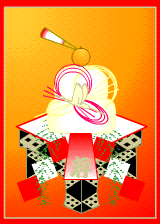
 Japanese Children's
Books
Japanese Children's
Books 
 Contents
Contents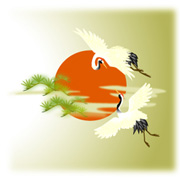
 Highlight: Interview
with Anno Mitsumasa
Highlight: Interview
with Anno Mitsumasa Japanese
Picture Books
Japanese
Picture Books Seasonal Picture Books
Seasonal Picture Books Japanese Picture Books in English
Japanese Picture Books in English In Celebration of the New Year: Osechi Ryori
In Celebration of the New Year: Osechi Ryori
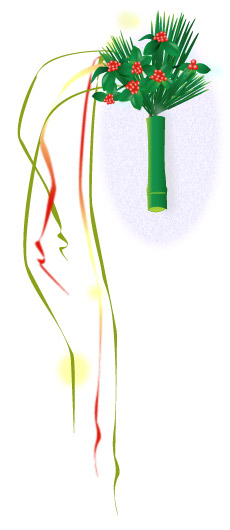
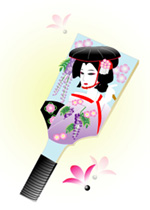
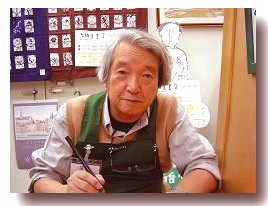


 Yes
it is. "ANNO" seems to be a surname that's used in other countries. My
understanding is that at that time, a book had to initially
be published in the U.K. prior to any other country for it to be
eligible
for the Kate Greenaway Medal. However, my editor (*1) was adamant about
the worthiness of this book and as an exception, it became a Commended
book and I received a prize certificate which is now on display at
the Mitsumasa Anno Museum.
Yes
it is. "ANNO" seems to be a surname that's used in other countries. My
understanding is that at that time, a book had to initially
be published in the U.K. prior to any other country for it to be
eligible
for the Kate Greenaway Medal. However, my editor (*1) was adamant about
the worthiness of this book and as an exception, it became a Commended
book and I received a prize certificate which is now on display at
the Mitsumasa Anno Museum. Well,
just because it's an alphabet book doesn't mean I'd originally
planned for international publication. But I do think that I wanted it
to be something that even people outside Japan would enjoy. For
example, if I'd used "Amedama", the romanized Japanese for "candy drop"
as my word for "A", that wouldn't have been possible. I asked the
teachers at the American school in Chofu city, Tokyo as well as various
American and British editors for advice in selecting appropriate words
for each letter. As an example, there was the time I wanted to choose
an original word for "H" and decided to use "Hag". So I drew a picture
of an old witch. My advisors said to me, "Hag" is generally used to
convey the image of an ugly old woman and it's relatively uncommon to
use it in reference to a witch. Even if you wanted to use this drawing
for "Witch", you'd have to remember that witches are not necessarily
old and ugly. Witches can be quite young and beautiful". So as you can
see, there was often a difference between my image of the word I'd
chosen and that of native speakers of English. I wound up having to
find an alternative word to use for many of the letters. I could
probably write a whole book on all the difficulties I came across in
just trying to complete this one picture book.
Well,
just because it's an alphabet book doesn't mean I'd originally
planned for international publication. But I do think that I wanted it
to be something that even people outside Japan would enjoy. For
example, if I'd used "Amedama", the romanized Japanese for "candy drop"
as my word for "A", that wouldn't have been possible. I asked the
teachers at the American school in Chofu city, Tokyo as well as various
American and British editors for advice in selecting appropriate words
for each letter. As an example, there was the time I wanted to choose
an original word for "H" and decided to use "Hag". So I drew a picture
of an old witch. My advisors said to me, "Hag" is generally used to
convey the image of an ugly old woman and it's relatively uncommon to
use it in reference to a witch. Even if you wanted to use this drawing
for "Witch", you'd have to remember that witches are not necessarily
old and ugly. Witches can be quite young and beautiful". So as you can
see, there was often a difference between my image of the word I'd
chosen and that of native speakers of English. I wound up having to
find an alternative word to use for many of the letters. I could
probably write a whole book on all the difficulties I came across in
just trying to complete this one picture book. Next we'd like to
ask about
your involvement in the project where you collaborated with eight other
outstanding picture book
authors from around the world on the picture book, "
Next we'd like to
ask about
your involvement in the project where you collaborated with eight other
outstanding picture book
authors from around the world on the picture book, " In
December 2003, my book, "
In
December 2003, my book, "